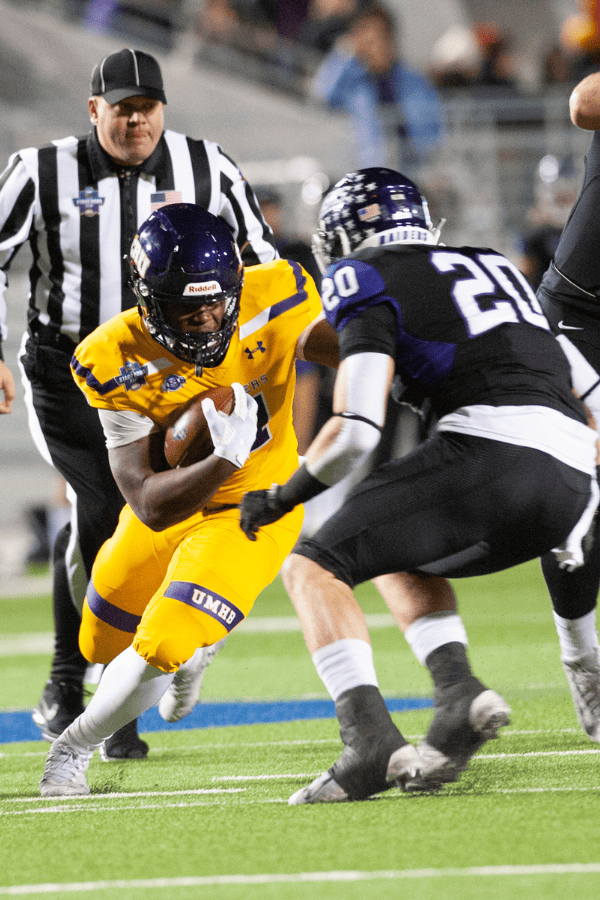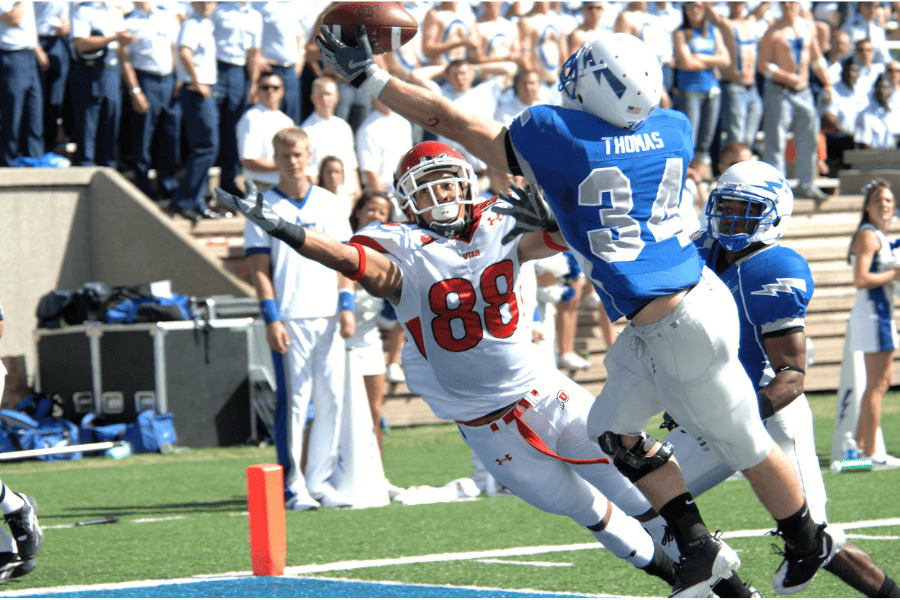What Does a Safety Do in Football? (Complete Guide)
In this article, we’ll focus on the role of the safety, a defensive back whose position is akin to the last line of defense. Safeties are pivotal to the team’s defensive success, playing a key role in both stopping the opponent’s passing and running game.
Their positioning, often furthest from the line of scrimmage, grants them a wide view of the field, enabling them to read the opponent’s offense, make critical decisions, and react accordingly.
Despite not being as glorified as positions like the quarterback or the wide receiver, a safety’s role in football is complex, demanding, and absolutely vital.
Definition of a Safety
Explanation of the Position
In the game of football, a safety is a member of the defensive team and is considered part of the defensive backfield, which also includes positions such as the cornerback.
FYI: The term “safety” also refers to a specific scoring play in the game, but in this context, we’re focusing on the position.
Safeties are often the furthest players from the line of scrimmage at the start of a play, standing well back from the frontline action. This positioning provides a broader view of the field, enabling them to read and react to the offensive team’s plays.
There are usually two safeties on the field in standard defensive setups – the free safety and the strong safety. Their names relate to their positioning and roles, with the free safety often having more freedom to roam the defensive backfield and the strong safety lining up on the side of the field where the offensive team is more likely to run (the “strong” side).
Key Responsibilities of a Safety
The safety’s primary responsibility is to prevent the opposing team from making big plays, whether through running or passing. This often involves covering receivers to prevent them from catching the ball, making tackles to stop running plays, and occasionally blitzing the quarterback.
Against the Pass
In the passing game, safeties are often tasked with preventing deep throws down the field.
They must read the quarterback’s intentions and quickly cover wide receivers or tight ends who are trying to get open. This role requires excellent speed, agility, and ball skills.
Strong ball skills and a good vertical leap are assets, allowing safeties to challenge and break up passes, or better yet, snatch the ball from the air for a turnover. Interceptions can significantly shift the momentum of a game in favor of the safety’s team.
Against the Run

In the running game, the safety is often the last line of defense.
If a running back breaks through the defensive line and the linebackers, it’s up to the safety to prevent him from making a touchdown. This requires not just speed and agility, but also tackling skills and the courage to face off against players who are often larger and stronger.
Beyond these responsibilities, the safety is also often a key communicator in the defense, helping to align other defensive backs and sometimes even linebackers. Their position on the field gives them a unique perspective, and they must use this to help coordinate the team’s defensive efforts.
Responsibility Based on Scheme
Football defenses often switch between man-to-man and zone defenses, requiring a safety to adapt their approach accordingly.
In a man-to-man defense, a safety is assigned a specific offensive player to cover, typically a tight end or an offensive player out of the backfield. This scenario demands speed, agility, and coverage skills from the safety, allowing them to shadow their assigned player and prevent a successful pass.
In contrast, a zone defense assigns a safety to defend a particular area or ‘zone’ on the field, rather than tracking a specific player.
Safeties often cover the deep middle or deep halves of the field in a zone scheme, watching the quarterback’s eyes and reacting to the ball in flight. This approach requires a solid understanding of game dynamics, spatial awareness, anticipation, and excellent ball skills.
Free Safety vs Strong Safety
While the general role of a safety is consistent in terms of providing the last line of defense, there are nuances that differentiate the two types of safeties: the free safety (FS) and the strong safety (SS). Their names indicate their primary responsibilities and their positioning on the field.
The free safety is often the deepest player on the defense, playing “free” or unattached to any specific part of the defense, while the strong safety is typically aligned closer to the line of scrimmage, often on the ‘strong’ side of the field where the offensive team has additional potential blockers, such as a tight end.
Roles and Responsibilities of the Free Safety

The free safety is often seen as the last line of defense against the pass. This position requires a player with speed, great ball skills, and excellent field vision. A free safety must be able to read the quarterback and receiver routes to anticipate pass plays and be quick enough to cover large portions of the field.
Their primary responsibility is to prevent big passing plays down the field, either by breaking up the pass or by making an interception.
Besides pass coverage, free safeties often have a role in run support. However, as they are typically the deepest defender, their primary job in run defense is usually to tackle the ball carrier if other defenders are unable to.
Free safeties also often serve as the defensive quarterback due to their central position and wide view of the field, making them responsible for coordinating the defensive backfield and making sure everyone is aligned properly before the snap.
Roles and Responsibilities of the Strong Safety
The strong safety is a more versatile and hybrid position, often playing closer to the line of scrimmage, especially when the offense is more likely to run the ball.
The strong safety can be thought of as a cross between a linebacker and a defensive back, needing both the physicality to tackle powerful running backs and the speed and agility to cover tight ends or slot receivers.
Strong safeties are often involved in run support, stepping into the box to add an extra body to stop the run. They must be able to navigate through traffic, shed blocks, and bring down ball carriers effectively.
In passing situations, a strong safety may be tasked with covering a tight end or a running back, requiring them to have good man-to-man coverage skills. However, they can also be asked to cover a zone, particularly in the middle of the field or a deep half on one side of the field.
While the strong safety’s role can vary greatly depending on the defensive scheme and the specific situation, the position demands a versatile player who can contribute in both pass defense and run defense.
Skills and Qualities of an Effective Safety
Now that we understand what a safety’s role on the field is, let’s take a look at the skills necessary to be good at the position.
Speed and Agility
Speed and agility are crucial for a safety. With a primary responsibility of defending against deep passing plays, a safety needs the speed to keep up with fast wide receivers and the agility to quickly change direction based on the movement of the ball or the players they’re defending.
They must be able to swiftly close gaps, chase down opponents, and cover significant portions of the field quickly. Agility helps a safety to quickly alter their path of motion, enabling them to react to the unpredictable nature of offensive plays.
Spatial Awareness and Reading the Game
Effective safeties must possess a high level of spatial awareness and a deep understanding of the game. They need to quickly assess the formation of the offense, anticipate the likely play, and determine the most effective response.
This ability to read the game enables a safety to position themselves correctly, whether they need to provide deep help to a cornerback or step up to support the run defense. Spatial awareness is crucial when playing zone defense, as the safety must know their area of responsibility and react to any offensive players entering their zone.
Toughness and Tackling Skills
In addition to their coverage duties, safeties are expected to contribute to stopping the run. This responsibility requires toughness and reliable tackling skills. Whether they’re facing a speedy running back breaking through the line or a large tight end catching a pass, a safety must be able to bring down the opponent effectively.
Tackling is a combination of technique, strength, and will, and an effective safety must excel in all these areas to prevent big gains and potentially save touchdowns.
Communication Skills and Leadership
A safety often acts as the defensive quarterback, providing direction and making last-minute adjustments. This responsibility requires excellent communication skills, as the safety must ensure that all players in the defensive backfield know their assignments and are correctly aligned.
Safeties often act as leaders within the team, providing motivation, and maintaining high standards of performance. These leadership qualities, combined with the aforementioned physical and tactical skills, help create a safety who is integral to the team’s defensive success.
Legendary NFL Safeties
The position of safety in football has been graced by some remarkable athletes who have left an indelible mark on the game. Here we’ll highlight a few notable safeties whose exceptional skills, strategic acumen, and impactful careers have set them apart in the annals of football history.
- Ronnie Lott: One of the greatest safeties in NFL history, Ronnie Lott played for the San Francisco 49ers, Los Angeles Raiders, and New York Jets during his 14-season career from 1981 to 1995. He was recognized for his hard-hitting style and exceptional ball skills, recording 63 career interceptions. Lott was a key part of the 49ers’ dynasty in the 1980s, helping the team win four Super Bowl titles.
- Ed Reed: Ed Reed, who played for the Baltimore Ravens for most of his career, is considered one of the best safeties in the history of the game. Known for his incredible range and ball-hawking ability, Reed had a knack for making big plays in crucial moments. He recorded 64 interceptions in his career, seven of which he returned for touchdowns. Reed was instrumental in the Ravens’ Super Bowl XLVII victory.
- Troy Polamalu: Known for his aggressive style of play and his signature flowing hair, Troy Polamalu was a standout safety for the Pittsburgh Steelers from 2003 to 2014. Polamalu’s versatility allowed him to excel in both pass coverage and run support, and he was known for his ability to make game-changing plays. He helped the Steelers secure two Super Bowl victories during his career.
- Brian Dawkins: Brian Dawkins, nicknamed “Weapon X” for his fierce and relentless style of play, spent the majority of his career with the Philadelphia Eagles. He was renowned for his hard hits, excellent coverage skills, and leadership on and off the field. Despite his relatively small size for the safety position, Dawkins made a significant impact on every game he played.
Final Thoughts
In the game of football, the safety position holds a pivotal role that can shape the outcome of the game.
Whether they’re serving as the last line of defense against a deep pass, stepping up to halt a powerful running play, or leading and coordinating the defensive backfield, safeties embody a blend of speed, agility, strength, and football intelligence that’s hard to match.

